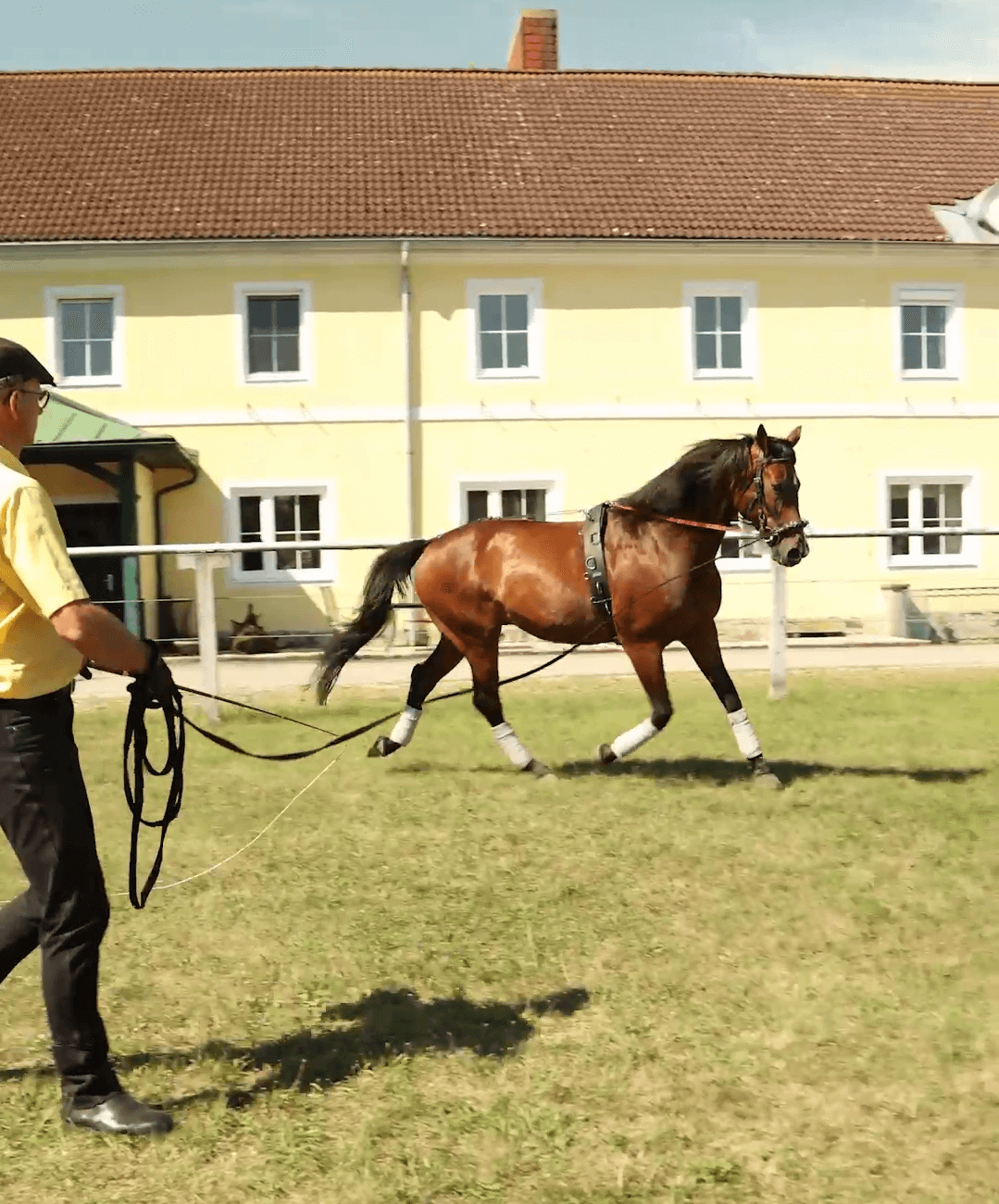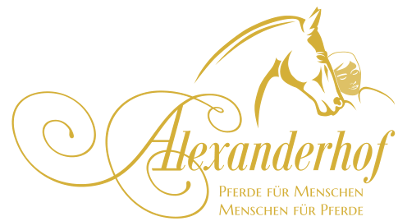There is a word I just can’t stand hearing anymore. It is the term “Tiring out a horse on the lunge”. Especially considering how horses are literally worked under this term.
Fortunately, not everywhere, but widespread enough to hurt, is the approach to lunging as a means to burn off excess energy in the horse. Burning off (life-) energy is an even more accurate description – and this occurs on both physical and psychological meaning.
I apologize for having to use a strong expression here, but this is really absolute bullshit. Due to a lack of knowledge and experience, even in professional riding circles, the average horse owner hardly has a chance to learn anything different from such role models. More or less, one can repeatedly observe the following during lunging:
- The horse is led into the arena – the anticipation of what’s to come is already written on its face.
- It follows – if it doesn’t bolt right away – just one or two rounds at a walk.
- Then immediately trotting at a high speed.
- More or less controlled, the horse runs or bucks for minutes until it sweats and steams.
- All of this either falling apart without any form or worse: forcibly restrained without any expertise.
- The horse hangs heavily on the lunge line, and riding nearby becomes difficult for others because you never know if the horse will break away from the lunge line at any moment.
When the horse is “finished being centrifuged and spun out,” it is either ridden further or led back to the stable, still sweating and heavily panting. It has moved, so that’s considered good enough.
Daily the same routine… Groundhog Day all over again… nothing gets better…
Anyone even remotely familiar with healthy sports practices knows that there is nothing worse than wildly thrashing around in a cold, un-warmed-up state and twisting oneself uncontrollably in all directions. Exhausting oneself before the actual sport so that only a residual energy is left for the main activity is like a race car driver letting the air out of all four tires before the race just to be safe. This cannot be healthy and it is not. Yet, this is how it’s done.
Physiotherapists are supposed to fix it later. But when it comes to damaged joints, even they reach their limits – to the great detriment of the horses.
Some consider this appropriate, necessary, and thus correct. They believe: “Lunging doesn’t need to be learned – anyone can do it.” Anything else would be embarrassing.
Many, due to poor role models in their environment, know no other way but feel uneasy about what they do. To those, I can say that your feeling is not deceiving you.
I want to clear up two major misconceptions:
- Misconception No. 1: “My horse needs to blow off steam on the lunge. It shows me that every time.”
- Misconception No. 2: “If the horse can’t blow off steam before riding – especially after rest periods – it can’t be ridden safely.”
The result is horses that seemingly prove this to their owners every day. In reality, the opposite is happening. From the beginning, these horses learn that lunging means “running off and bucking.” What is perceived as a quirk of the horse is actually trained behavior! Horses don’t bolt because they want to burn off energy, but because they have learned: Lunge = stress.
This is nothing less than a clear confusion of cause and effect! And this is what needs to be reversed.
If you show young horses from the first lunging session that lunging means “walking calmly first, trotting lightly after 10 minutes, and gradually increasing the energy level,” they won’t buck off. Not even after several days without training. This can be taught from the beginning. Fortunately, it can almost always be relearned if things have gone wrong. The key is to always avoid uncontrolled bolting. This can be achieved if the causes are understood. It might just take longer sometimes for it to have a lasting effect.
Lunging is, in the end, nothing more than leading on a long line. If it doesn’t work on a long line, stay close to the horse and only increase the distance when the horse feels secure. It is always better to lead the horse controlled by hand for even half an hour than to let it buck uncontrollably for a longer time.
It can happen briefly in between. A few joyful bucks to loosen up are always okay. But never let your horse run off or buck for long stretches.
What is needed is a minimum of easily learnable lunging technique, body language, and above all, horse sense. What is needed is a minimum ability to read a horse and have a clear goal to distinguish “beneficial” from “unhealthy,” which isn’t that hard to learn. You can learn this in our seminars or with our online lunging course.
–> see here –>
The great thing is that this approach to our relationship with our horse is wonderfully beneficial, with the horses being grateful and willing participants. They instinctively feel that it serves their well-being.
Isn’t that wonderful? And the best part is: it’s sustainable.
So, I advocate for abolishing this term along with its methodology. The horse should not be “over-lunged” (drained of energy) but rather “pre-lunged” in the sense of being “prepared.” Pre-lunging should serve to warm up, loosen, and relax the horse without the rider’s weight, preparing it for healthy peak performance under the saddle.
We also use the term “athletic lunging.” After a loosening phase, this involves upright and collected training on the lunge, complementing riding, driving or what ever. It is a variation in athletic training. Both terms, pre-lunging before riding and athletic lunging, stand not only for physical health, but also for the psychological benefits for horses. These are not original concepts from us, but terms meant to clarify. Experienced horsemen who valued their horses have known this for centuries.
Many of our students express immense gratitude when they are shown a way that clearly benefits the horse and the horse-human relationship. It’s sustainable! A phrase I often hear is: “Finally I have a plan, finally I have a meaningful goal and the methods to achieve it.”
I hope these words have encouraged you. At the very least, I hope they have sparked some doubt about the apparent necessity of tiring out a horse on the lunge. I wish you continued joy in lunging!
–> Learn more about athletic lunging here –>
Alexander Kronsteiner
Alexanderhof






